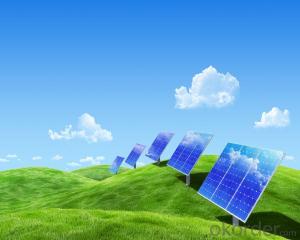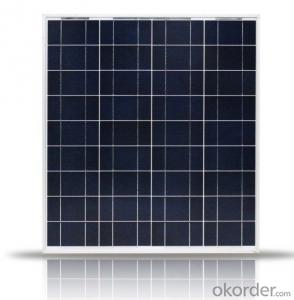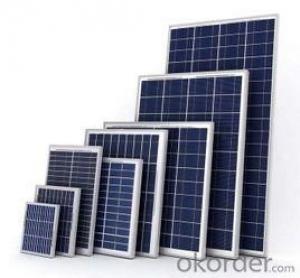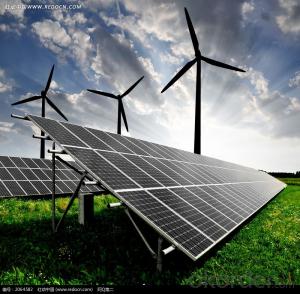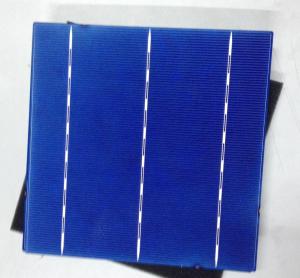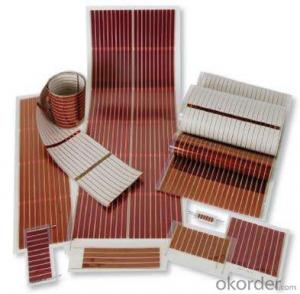White Solar Cells 250W Poly Solar Panel with 25 Years Warranty CNBM
- Loading Port:
- Qingdao
- Payment Terms:
- TT OR LC
- Min Order Qty:
- 10 set
- Supply Capability:
- 300000 set/month
OKorder Service Pledge
OKorder Financial Service
You Might Also Like
Polycrystalline Solar Modules
CNBM offers a range of small, medium and large polycrystalline solar modules, designed for a range of requirements.

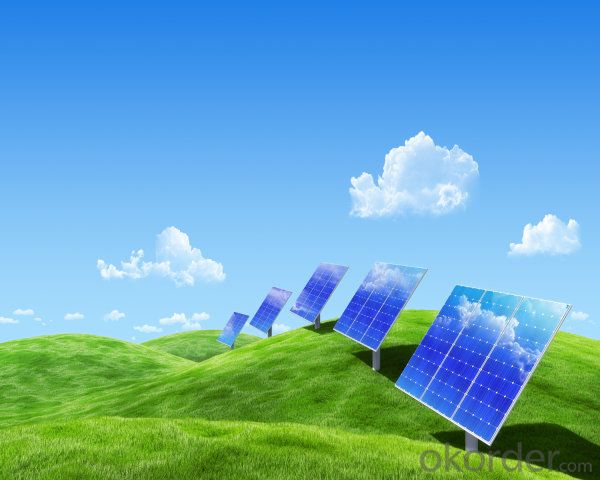
Specifications:
Tolerance | +/-3% |
Cell | Polycrystalline silicon solar cells (156 x 156mm) |
N0. of Cells | 60 (10 x 6) |
Dimension of Modules (mm) | 1650 x 990 x 40 |
Weight (kg) | 25.5 |
Limits:
Operating Temperature | -40~+85? |
Storage Temperature | -40~+85? |
Maximum System Voltage | 1000 VDC max. |
Hail Impact | Diameter of 28mm with impact speed |
Temperature and Coefficients:
NOCT | 48C+/-2? |
Voltage temperature coefficient (%/K) | -0.35 |
Current temperature coefficient (%/K) | 0.05 |
Power temperature coefficient (%/K) | -0.45 |
Characteristics:
Model: | SGM-200P | SGM-210P | SGM-220P |
Max-power voltage Vmp (V) | 29.2 | 29.4 | 29.41 |
Max-power current Imp (A) | 6.85 | 7.14 | 7.48 |
Open-circuit voltage Voc (V) | 36.5 | 36.69 | 36.9 |
Short-Circuit Current Isc (A) | 7.28 | 7.6 | 7.93 |
Max-power Pm(W) | 200 | 210 | 220 |
Model: | SGM-230P |
Max-power voltage Vmp (V) | 29.8 |
Max-power current Imp (A) | 7.72 |
Open-circuit voltage Voc (V) | 37.31 |
Short-Circuit Current Isc (A) | 8.19 |
Max-power Pm(W) | 230 |
STC: Irradiance 1000W/m2, module temperature 25?, AM-=1.5
Poly Crystalline Solar Panels Specifications Range
Maximum Power (Pm) | Dimension | Weight | Operating Voltage (Vmp) | Operating Current (Imp) | Open Circuit Voltage (Voc) | Short Circuit Current (Isc) |
0.45W | 140x80x10mm | 0.08kg | 3.3V | 150mA | 4.6V | 160mA |
1.0W | 162x140x10mm | 0.16kg | 7.5V | 150mA | 10.3V | 160mA |
4.5W | 269x251x23mm | 0.8kg | 16.5V | 0.27A | 20.5V | 0.3A |
10W | 420.1×268.9×22.6mm | 1.92kg | 17.5V | 0.58A | 20.5V | 0.6A |
20W | 425x502x50mm | 3.0kg | 16.8V | 1.19A | 21.0V | 1.29A |
30W | 593x502x22.6mm | 3.9kg | 16.8V | 1.78A | 21.0V | 1.94A |
40W | 655x537x50mm | 5.75kg | 17.3V | 2.31A | 22.1V | 2.54A |
50W | 839x537x50mm | 6.0kg | 17.5V | 2.9A | 21.8V | 3.17A |
65W | 1111x502x50mm | 7.2kg | 17.6V | 3.69A | 22.1V | 3.99A |
80W | 1204x537x50mm | 7.7kg | 17.6V | 4.55A | 22.1V | 4.8A |
- Q: Can I buy solar cells easily online?
- I don't know about solar cells, but I do know you can buy solar panels online.
- Q: What is a polycrystalline solar cell?
- A polycrystalline solar cell is a type of solar cell made from multiple small silicon crystals, unlike a monocrystalline solar cell which is made from a single crystal. This manufacturing process makes polycrystalline solar cells less expensive to produce, although they typically have slightly lower efficiency compared to monocrystalline solar cells.
- Q: Can solar cells be used for powering electric fences?
- Yes, solar cells can be used for powering electric fences. Solar cells convert sunlight into electricity, which can then be stored in batteries and used to power electric fences. This makes them a reliable and sustainable option for powering fences in areas without easy access to a traditional power grid.
- Q: Can solar cells be combined with energy storage systems?
- Yes, solar cells can be combined with energy storage systems. This integration allows for the excess energy generated by solar cells to be stored for later use, such as during periods of low sunlight or at night. Energy storage systems, such as batteries, enable a more reliable and efficient utilization of solar energy, making it a feasible and sustainable solution for meeting energy demands.
- Q: Can solar cells be used for powering remote weather stations?
- Yes, solar cells can be used to power remote weather stations. Solar cells convert sunlight into electricity, which can be used to power various devices, including weather stations. This makes them an ideal and sustainable solution for providing power to remote locations where traditional grid connectivity may not be available.
- Q: Is that true that the price of solar cells will be reduced in the coming year?
- It is very possibile that that solar cells' price will go down this year because there were many orders last year, either from European or China market. The solar cells are actually very sustainable. Once you buy it, you can use it for years. With the falling demand the price of course will go down.
- Q: Can solar cells be used in disaster relief efforts?
- Yes, solar cells can be used in disaster relief efforts. Solar cells can provide a reliable source of clean and renewable energy, which is crucial during times of disaster when traditional power sources may be disrupted. Solar cells can power essential equipment and devices such as lighting, communication systems, medical equipment, and water purification systems, enabling relief workers to effectively respond to the needs of affected communities. Additionally, solar cells can be easily deployed and are not dependent on fuel supply or infrastructure, making them ideal for disaster-prone areas or remote locations.
- Q: How are solar cells used in military applications?
- Solar cells are used in military applications to power various devices and equipment, such as communication systems, surveillance equipment, and remote sensors. They provide a reliable and renewable source of energy in remote locations where traditional power sources may be limited or unavailable. Additionally, solar cells can be integrated into portable solar panels, backpacks, or tents, allowing soldiers to charge their electronic devices and batteries on the go, enhancing their operational efficiency and reducing their reliance on fuel-based generators.
- Q: Can solar cells be used in extreme climates?
- Yes, solar cells can be used in extreme climates. While extreme temperatures and harsh weather conditions can affect their efficiency to some extent, solar cells are designed to withstand a wide range of climates. In fact, many solar installations are successfully operating in extreme environments such as deserts, polar regions, and high-altitude areas. Proper design, installation, and maintenance techniques can ensure their optimal performance and durability even in challenging climate conditions.
- Q: Can somebody list some of the materials used for making solar cells?
- The basic component of a solar cell is pure silicon, which is not pure in its natural state.
Send your message to us
White Solar Cells 250W Poly Solar Panel with 25 Years Warranty CNBM
- Loading Port:
- Qingdao
- Payment Terms:
- TT OR LC
- Min Order Qty:
- 10 set
- Supply Capability:
- 300000 set/month
OKorder Service Pledge
OKorder Financial Service
Similar products
Hot products
Hot Searches
Related keywords
